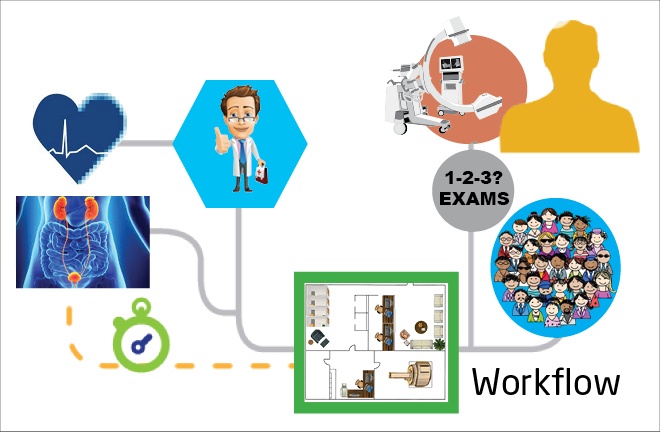
You know you need a new piece of medical imaging equipment for your hospital, clinic, practice or healthcare facility. But there are so many considerations before you select the right one. Do you have to renovate your current space in order to accommodate it? Do you have the budget for it? Should you buy new or refurbished? One consideration that is often overlooked is which piece of equipment is best suited for your workflow and imaging needs? Make the right choice, and your physicians will be able to make faster diagnoses, reduce x-ray times, increase patient comfort and result in faster ROI.Make the wrong choice, and it can result in higher costs, lower ROI and disruptive workflows. Make the wrong decision, and it can be disastrous, since the average lifespan of medical imaging equipment is 20 years. That’s a long time to live with a piece of equipment that hurts your practice, instead of helping it.
If you want to make sure you choose the right medical imaging equipment for your practice, clinic or hospital, here are 6 important considerations.
- Evaluate the room that will house the equipment. Is it an emergency room? Trauma center? Is it ED, general radiology, orthopedic? Are your patients ambulatory, or do you need to make room for wheelchairs, beds or stretchers?
- What is your client base? Will you provide imaging for children? Bariatric patients? Who you provide services for will affect how large or sturdy your X-ray table needs to be to support patient weight. You don’t want to lose important functionality like table top movement and tilting.
- How many people will need to be in the imaging room besides the patient? Some procedures require more people in the room, like complicated neurology and interventional procedures. If you have a training facility, the room will also have to be larger in order to accommodate more people.
- What types of images will you be capturing? Chest? Abdomen? Standing knees? Feet? The kind of images you provide will also determine space requirements.
- How many image exams do you anticipate performing daily? What is the clinical workflow for the room?
- Will you provide imaging for critical care patients who require anesthesia or special gases? Will you need to accommodate ventilators and pumps?
Once you’ve gathered this information, your medical imaging equipment supplier can help you determine the type of equipment that will help or improve your workflow, and not hinder it. They’ll be able to determine if any room modifications will be required, like electricity, plumbing and structural support.
At Atlantis Worldwide, we have more than 25 years of experience in helping diagnostic imaging buyers make wise and informed decisions that result in optimum workflow and maximum ROI. After all, while there are many potential medical imaging equipment solutions, some make more economic and functional sense than others. We invite you to contact one of our experts as early as possible in your decision making process. We’re here to help! Contact Us Today!
Some blogs you may have missed:
- Your Image: The Importance of Upgrading Your Diagnostic Monitors
- 2016: The Year of Improving Your C-Arm
- Changing the Game: Xbox to X-Ray
- 7 Benefits of Medical Imaging File Sharing
- 3D Printing in Medical Imaging & Healthcare
Meet the author: Vikki Harmonay




